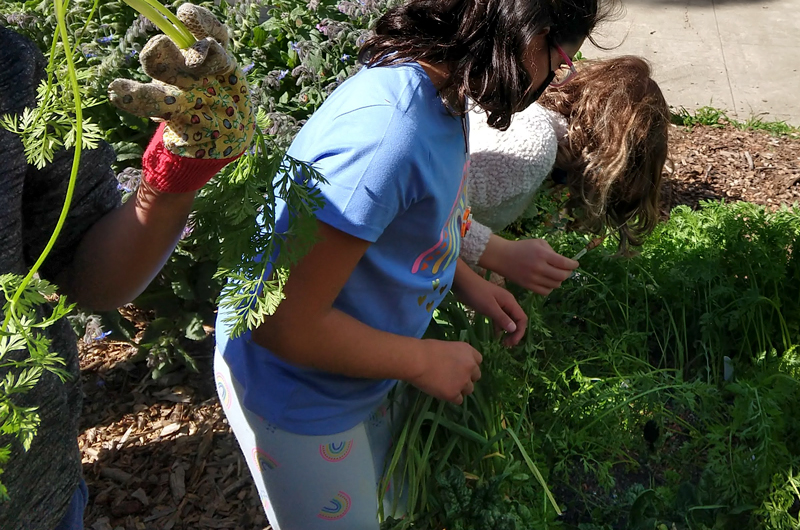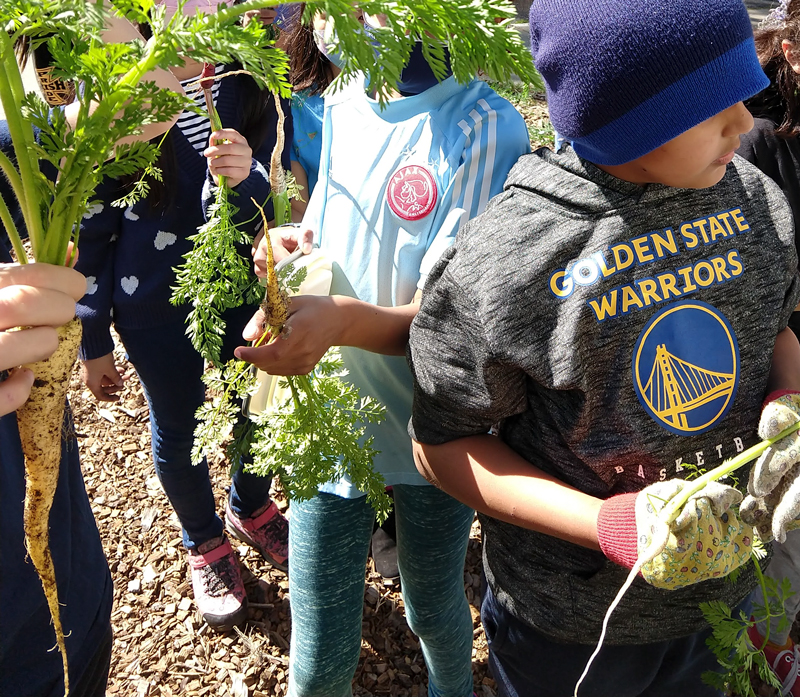Gardening with Elementary School Kids

I’ve written about gardening with kids before, but after working with elementary age kids in a garden club at the local grade school, I’ve learned a lot more about how kids and gardens work together.
I am not a teacher, and I have had no training in that direction. My only experience with kids has been around teaching them coding, so when I took on the garden club I was unsure of what to expect.
All kinds of kids want to garden
I was surprised at the mix of kids that joined the garden club. Some of them are the kids you’d expect, the overachievers, the kids who love to try anything and everything. But, some were the kids I didn’t expect: the sporty kids, the troublemakers, the ones who spent a lot of time in the principal’s office. A club for learning about plants and being outside appealed to all kinds of kids. I definitely had my expectations blown.
Boundaries are important
I’m starting my fourth session of garden club this January and I think I’ve finally gotten the hang of guiding the meetings in a way that doesn’t mean all of the kids start talking at once. It still happens, but I’m able to reel it in. They all want to share their own experiences, relevant or not, so I’ve learned to incorporate that into the meetings.
It’s not school, so you have to be flexible
I can’t expect the kids to constantly pay attention with so many exciting things in the garden to distract them. There’s a lot of repetition in teaching about gardening, which both helps and hurts in this case. For instance, I probably bring up how seeds are produced and how plants propagate themselves five times a session if not more. So if a couple of kids are fascinated by the whirling composter, that’s okay because they’ll pay attention the next time we talk about the same subject.
Kids want to get dirty
Hands on is absolutely the way to go. Gloves on, shovels in hand, they want to be digging. It doesn’t really matter if they’re planting things, weeding, or just looking for cool bugs. Kids want to be doing things. Listening to what you’re saying is a lot easier when their hands are busy. One activity that works great for “listening time” is ripping up cardboard and paper for the compost bin.
They want to take home the harvest
Show and tell is not just for kids at school–they want to share their garden with their family. Yes, even if that means bringing home one golf-ball-sized potato or shoe-string carrot, it must be done. Having plants in the garden that produce often, like strawberries or lettuce, is a great way to ensure a regular take-home offering.
Cool stuff is cool
Some days for garden club, when there wasn’t any major planting or harvesting operation happening, I would just go find cool plant parts to show the kids. I’m talking seed pods, leaves, thorns, flowers, moss. So many discussions started because of these items, and they told so many stories to share from their own experience with family gardens.
Failure leads to success
One of the best parts about the garden club is that every time something goes wrong in the garden, unlike my own home garden, I have 15 bright little faces to explain it to and get ideas from. The seedlings are being eaten! What do we do? We need to figure out who did it so that we can put measures in place to stop it from happening again.
We get to brainstorm, come up with ideas, and battle the issue together. In our case, we discovered that it wasn’t bugs, it was birds, so some bird netting and well placed CDs on strings did the trick.
Conclusions
If you have the opportunity to teach kids in the garden, be ready for their energy and curiosity, and then try to work your lessons around that, not the other way around.

